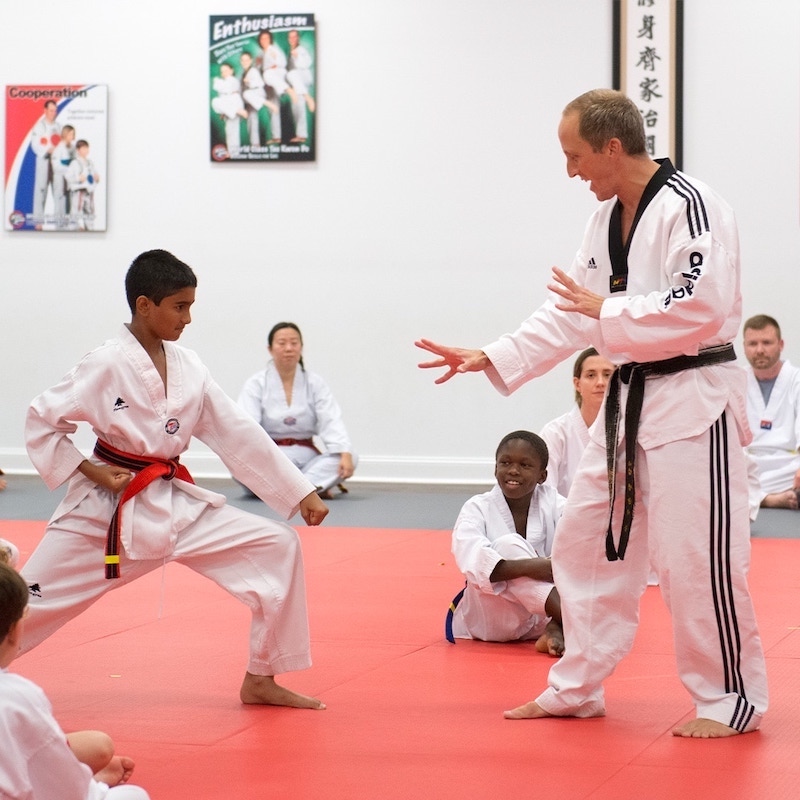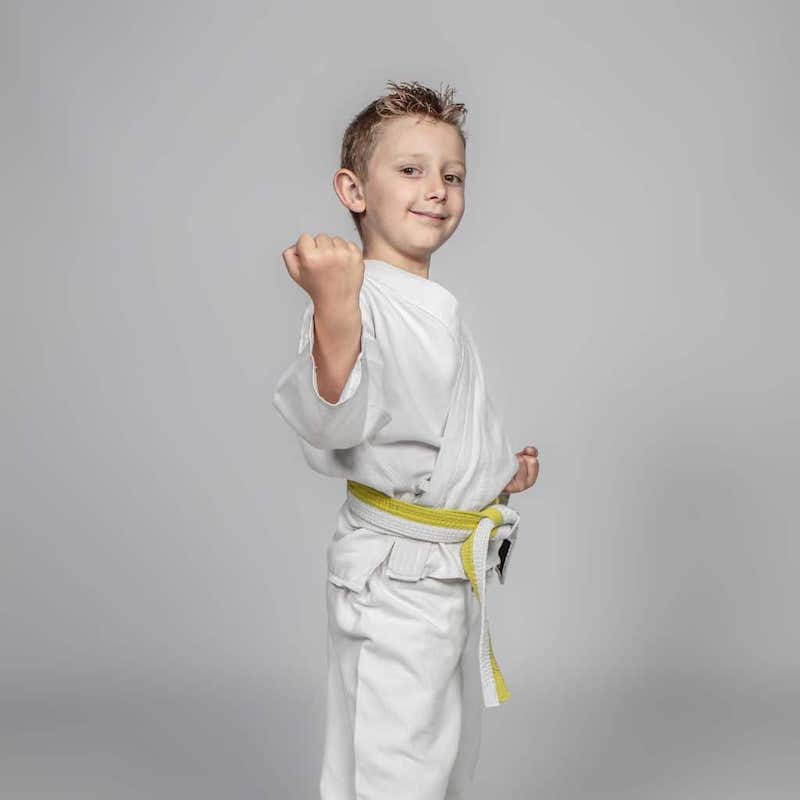Introduction to Martial Arts
The term ‘martial arts’ spans a wide spectrum of disciplines. Each offers unique tactics for combat and self-betterment. People across the globe practice martial arts for various reasons. From self-defense and fitness to cultural enrichment and personal growth, martial arts is more than physical combat; it’s a way of life.
Definition and Historical Background
Martial arts refer to codified systems and traditions of combat practices. These practices started thousands of years ago across different cultures. Ancient warriors mastered the art of fighting for survival and victory in battles. Today, martial arts blend this historical essence with modern practices.
Core Philosophy and Values
At the heart of martial arts are principles that transcend physical techniques. Values such as discipline, respect, and perseverance define martial arts. These teachings encourage personal growth, mental strength, and spiritual development. Through martial arts, one embarks on a journey to improve holistically, not just in physical prowess.
Different Martial Arts Styles and Their Origins
The world of martial arts is vast and varied. Each style comes from unique origins with distinct techniques and philosophies. Here, we will explore some of the key martial styles and their roots.
The Striking power of Muay Thai and Karate
Muay Thai hails from Thailand, known for powerful strikes and clinch fighting. Its history dates back to ancient warriors who needed strong combat skills. Karate emerged from Okinawa, Japan. It uses punches, kicks, and open-hand techniques. Both styles teach striking with precision and power.
The Grappling Techniques of Judo and Brazilian Jiu-Jitsu
Judo is a Japanese art focusing on throws and groundwork. It started in the 1880s for physical education. Brazilian Jiu-Jitsu, from Brazil, evolves from Japanese Jujutsu. It targets ground fighting and submission holds, vital for smaller fighters against bigger foes.
The Dynamic Movements of Capoeira
Capoeira combines martial arts with dance and music, creating a unique Brazilian fighting style. It developed amongst African slaves to disguise fighting techniques as dance movements.
The Fluidity and Meditative Elements of Tai Chi
Tai Chi, from ancient China, focuses on slow, flowing movements. It aids in relaxation and balance. This martial art values inner peace and physical control.
The Self-Defense Focus of Krav Maga
Krav Maga, from Israel, prepares individuals for real-life threats. It’s a practical system mixing strikes, grappling, and weapons defense. Simple but effective techniques are key in Krav Maga.
The Cultural Significance of Martial Arts
Martial arts hold deep cultural roots. It reflects the history, tradition, and values of societies. These physical disciplines are more than fighting techniques. They embody philosophies and ways of life specific to regions of the world.
Martial Arts in Asia: A Tapestry of Traditions
In Asia, martial arts link closely to cultural rituals and beliefs. Countries like China, Japan, and Korea each have distinct martial styles. These styles shape their cultural identities. They reflect the wisdom and practices of ancient times. Martial in Asia represents honor, bravery, and spiritual depth.
The Global Spread and Adaptation
Martial arts have a wide global influence. They spread from their Asian roots to the rest of the world. People everywhere now practice martial arts. They adapt these arts to fit their local cultures and needs. This global adaptation has made martial a bridge between cultures. It fosters understanding and unity among practitioners worldwide.
Martial Arts for Personal Development
The practice of martial serves as a powerful tool for personal development, nourishing the body, mind, and spirit alike.
Physical Benefits: Strength, Flexibility, and Endurance
Martial arts offer a complete workout, enhancing physical capabilities. Strength increases from techniques and drills. Flexibility is gained through dynamic movements and stretching routines. Endurance builds up with regular practice, leading to improved overall fitness.
Mental Benefits: Discipline, Focus, and Confidence
Training instills discipline by requiring consistent effort. Focus sharpens as one learns complex techniques. Confidence grows with each accomplishment, promoting a positive self-image and resilience.
Spiritual Growth and Lifelong Learning
Martial cultivate spiritual well-being. Reflective practices and meditative aspects lead to inner peace. The commitment to ongoing practice embodies the martial philosophy of lifelong learning and self-improvement.
Martial Arts as a Modern Lifestyle
Martial are not just historical traditions; they are a significant part of modern life. Their influence extends into media and public perception, creating a lifestyle that many aspire to.
The Popularity of Martial Arts in Media and Entertainment
The film industry has played a huge role in the rise of martial popularity. Movies and TV shows often feature martial arts, which attracts new students. Famous actors known for their martial arts skills, like Bruce Lee and Jackie Chan, have inspired many.
Martial video games also contribute to the craze. They capture the thrill of combat and the beauty of the techniques. This increases interest among the younger generation. From movies to video games, martial maintain a strong presence in entertainment.
Community and Social Aspects of Martial Practices
Martial go beyond individual practice; they build a strong community bond. Training alongside others creates lasting friendships and mutual respect. Students and teachers share a unique journey of growth and learning.
Local competitions and exhibitions also promote social interaction. Martial schools often hold events, bringing together enthusiasts from various backgrounds. This strengthens the martial community further. The shared experiences in training and at events contribute to a sense of belonging.
In conclusion, martial influence both media and social circles. They shape a modern lifestyle that integrates physical health, discipline, and social wellbeing.
Choosing the Right Martial Art
Selecting a martial art aligns with your goals and interests. Consider what drives you toward martial. Seek personal growth, self-defense, fitness, or a cultural experience.
Identifying Personal Goals and Interests
Start by asking yourself why you want to learn martial. Identify whether you aim for self-discipline, physical health, self-defense, or to connect with a cultural tradition. Knowing your objectives helps choose a style that resonates with you.
Understanding the Different Training Styles
Different martial arts have diverse training styles. Some emphasize striking techniques, others focus on grappling moves. Meanwhile, some blend both. Explore various styles to understand their training methods. This insight helps select a martial art that fits your preferred way of learning.
Assessing Physical Capabilities and Limitations
Evaluate your physical condition. Some martial are intense and demanding. Others are more gentle and adaptable. Reflection on physical capabilities is important. It ensures a martial arts choice that suits your bodily condition.
Martial and Self-Defense
Martial is about more than just fighting. They provide tools for facing real-world dangers. Styles like Krav Maga, Brazilian Jiu-Jitsu, and Judo offer practical skills. These skills help protect oneself in various situations, both anticipated and sudden.
Effective Techniques for Real-World Situations
Learning martial equips you with effective techniques. For example, Krav Maga teaches how to counteract attacks quickly. Such skills are vital when one needs to defend in unexpected scenarios. Practice makes these moves second nature, increasing the likelihood of a successful defense.
Building Situational Awareness and Conflict Avoidance
Martial arts also enhance situational awareness. Students learn to notice potential threats and avoid them. This awareness is a key part of self-defense. Martial training includes conflict de-escalation tactics as well. Understanding how to avoid a fight is as important as knowing how to win one. These life-saving skills stay with you, making you more secure in daily life.
Conclusion
Martial arts stand as a rich pathway for personal evolution. Each style lends its wisdom for growth beyond physical combat. They harmonize the body and the mindset, fostering inner peace. Training in martial is a continuous journey of self-discovery and mastery.
The Journey of Martial Arts: A Continuous Path of Growth and Discovery
Engaging in martial is more than learning to fight. It is a commitment to self-improvement in all life aspects. Regular practice in martial offers lessons in resilience. It’s a physical and spiritual quest that goes on for a lifetime. Martial artists are always learners, aiming to be their best version. They strive to push their limits, to grow stronger, and to live with purpose and discipline. The path of martial is timeless, providing a foundation for a life well-lived.



